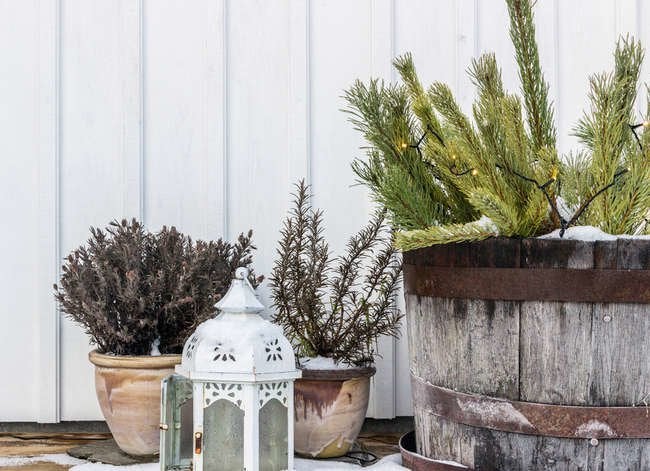We may earn revenue from the products available on this page and participate in affiliate programs. Learn More ›
Plant Winter Veggies
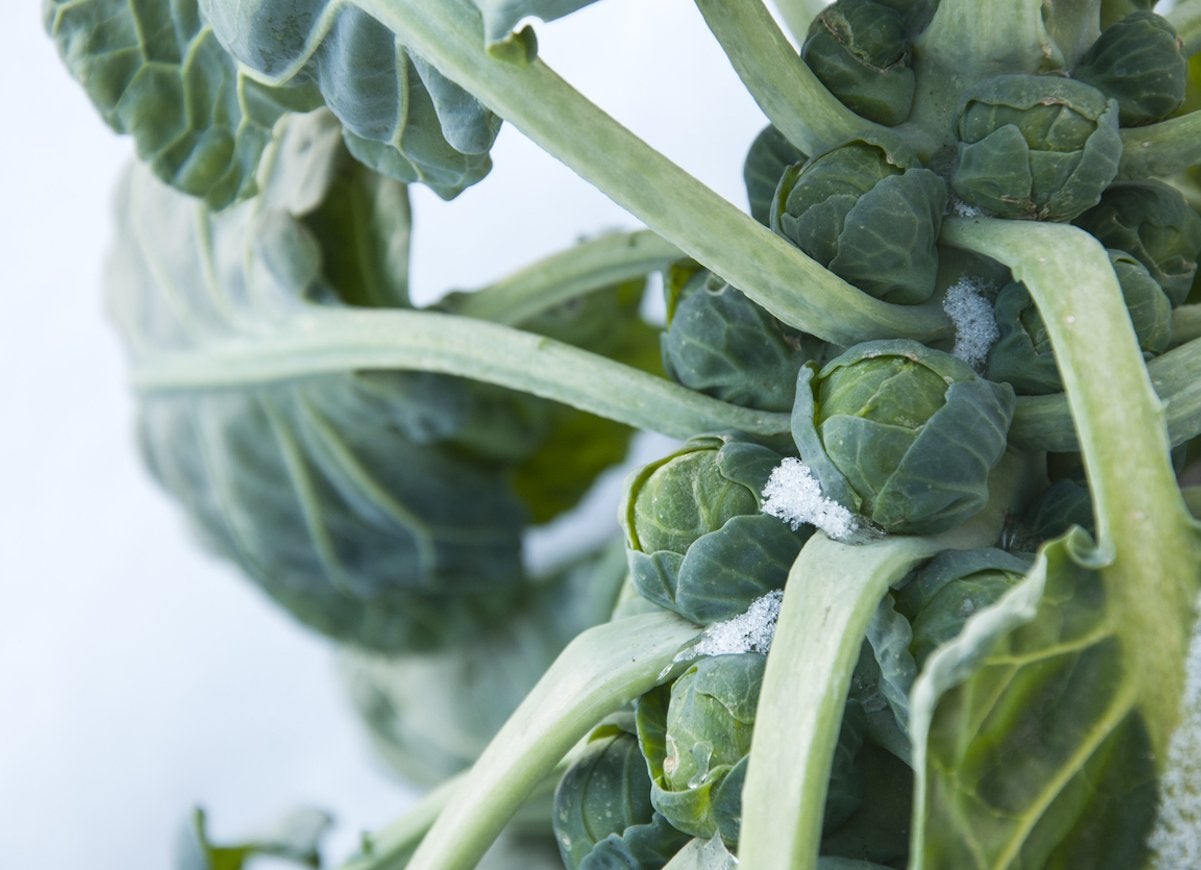
Just because the weather has gotten chilly doesn’t mean you can’t still grow things—and bring them to the dinner table. Many vegetables like kale, Brussels sprouts, and cabbage actually taste better after having been exposed to frost.
Related: How To: Grow Fresh Produce from Your Leftover Groceries
Feed the Wildlife
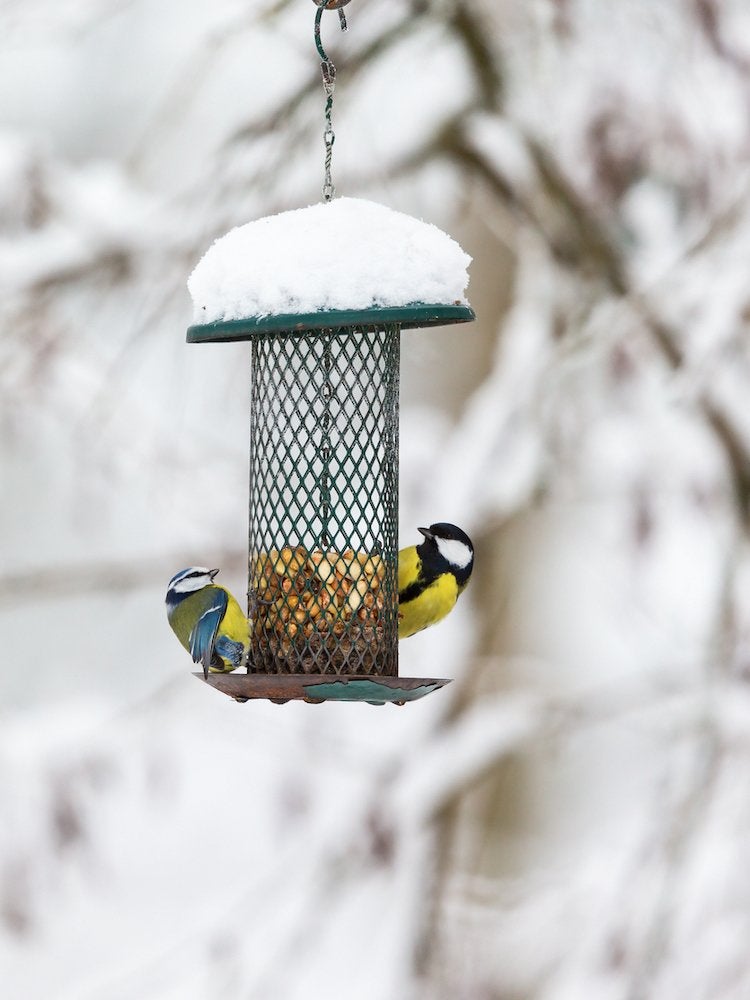
Though the leaves of many plants are dead in winter, there’s still life teeming in the garden. Attract winter wildlife to your property by putting out feeders with seed and suet for birds, and dried corncobs for squirrels and chipmunks.
Put in New Evergreens
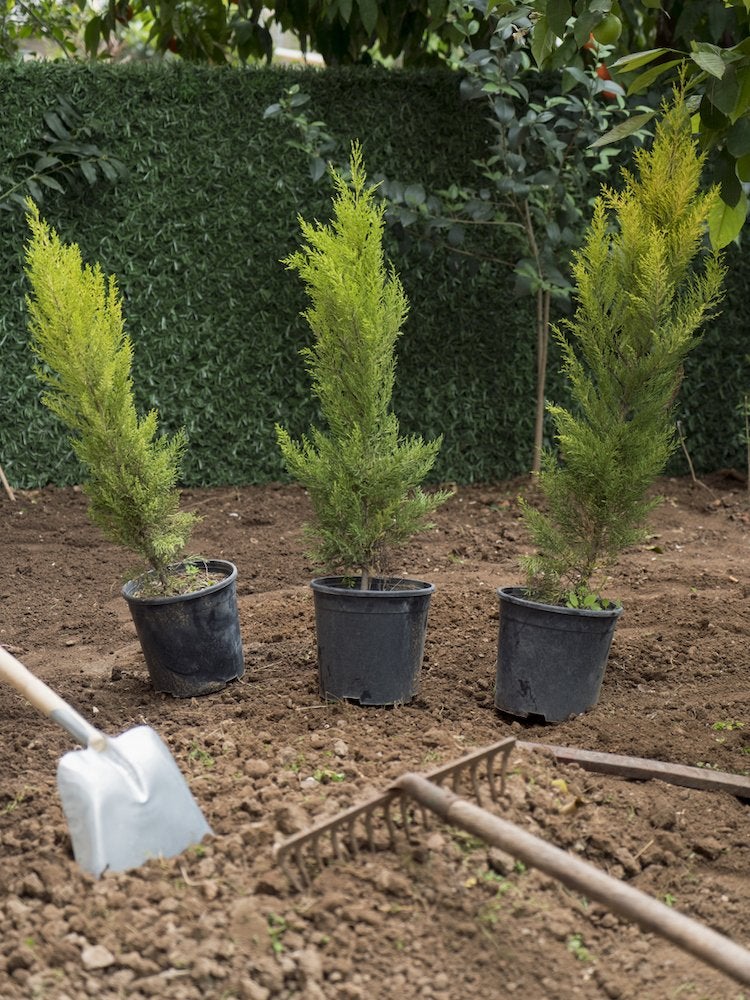
Fall is the best time to plant shrubs and trees, and if you choose evergreens like holly, juniper, pine, cedar, and fir, you will enhance your garden all year long, but especially in winter when color is at such a premium.
Do a Little Maintenance
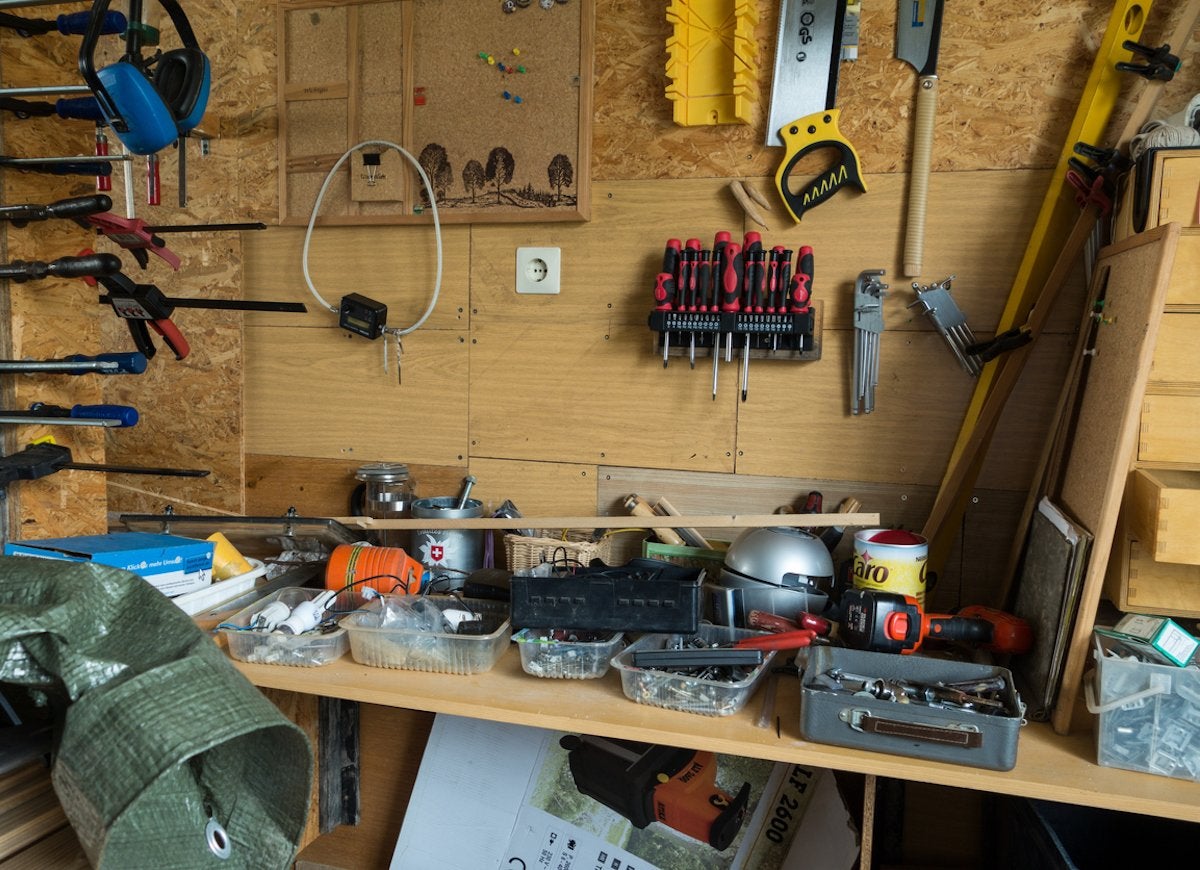
When you’re in the thick of the growing season, it’s hard to stop and organize your garden shed, or sharpen your mower blades. Take advantage of the downtime winter brings to take on some of those maintenance tasks you just can’t seem to fit in when the weather is nicer. It’s very satisfying to enter spring fully prepared!
Related: 45 Backyard Landscaping Ideas for Creating the Ultimate Outdoor Living Space
Start Planning!

There’s nothing more exciting for a gardener than the arrival of that first seed catalog in late winter. That’s the time to start dreaming about and planning what you want to plant in the coming season. Start plotting out your garden spaces, and ordering seeds and summer bulbs.
Related: Done With Winter? 12 Things You Can Do Now to Prep for Spring
Prune Shrubs and Trees
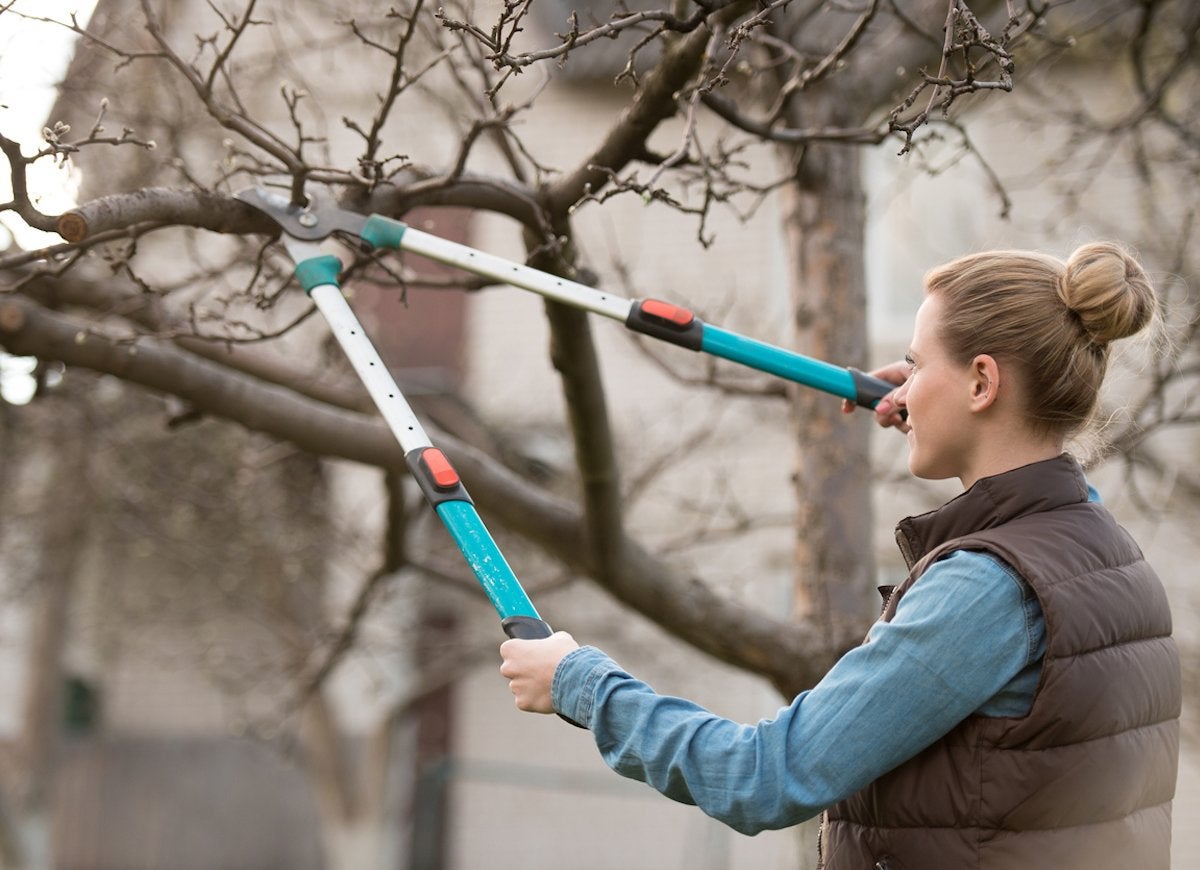
Avid gardeners know that it’s not just what you see in a garden that makes it rewarding—it’s what you can do. Activity in the garden definitely wanes during the cooler months, but you can still get out there and have fun pruning fruit trees, vines, deciduous shrubs, and ornamental trees.
Make Ice Luminaries
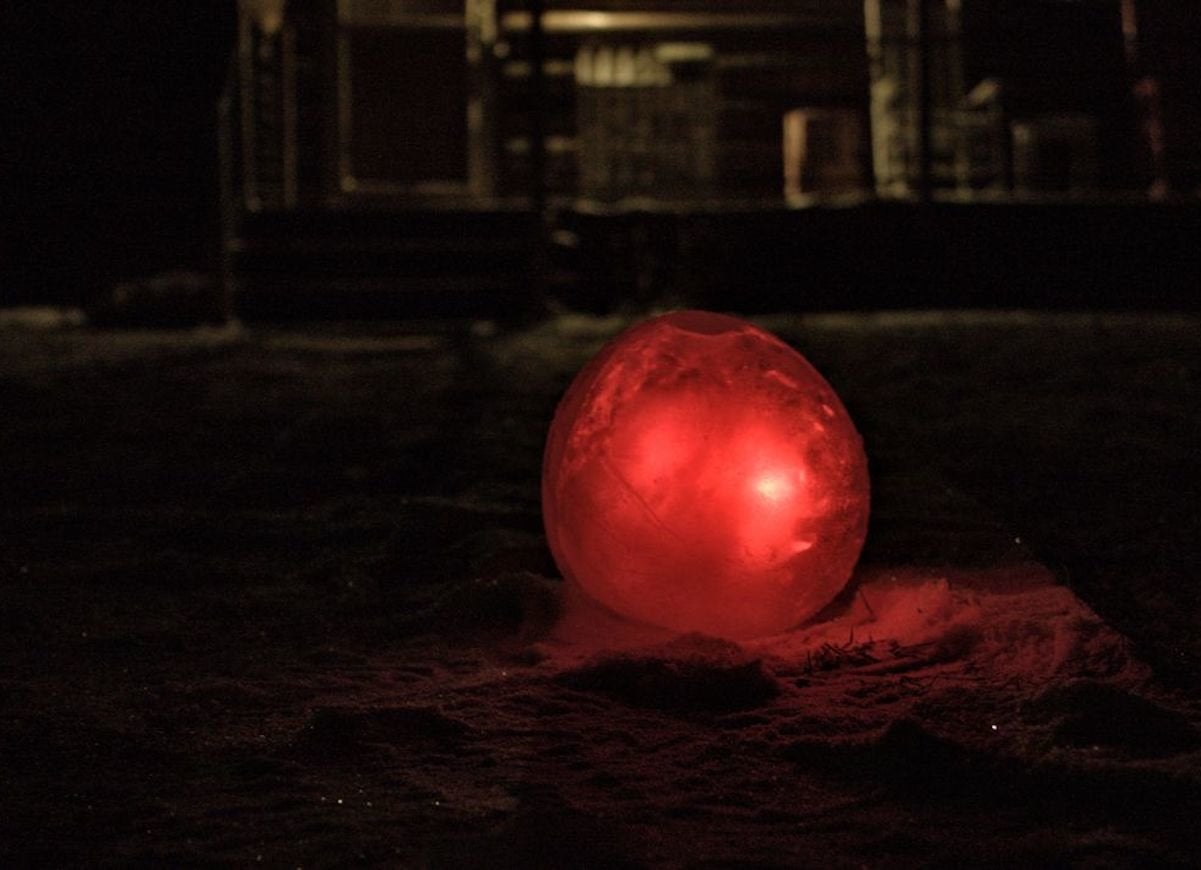
Instructables via mazzmn
Winter days mean darkness falls sooner. Add a little glow to your garden in wintertime by making a few ice luminaries. This is a simple, inexpensive, and eye-catching DIY project.
Plant Container Gardens
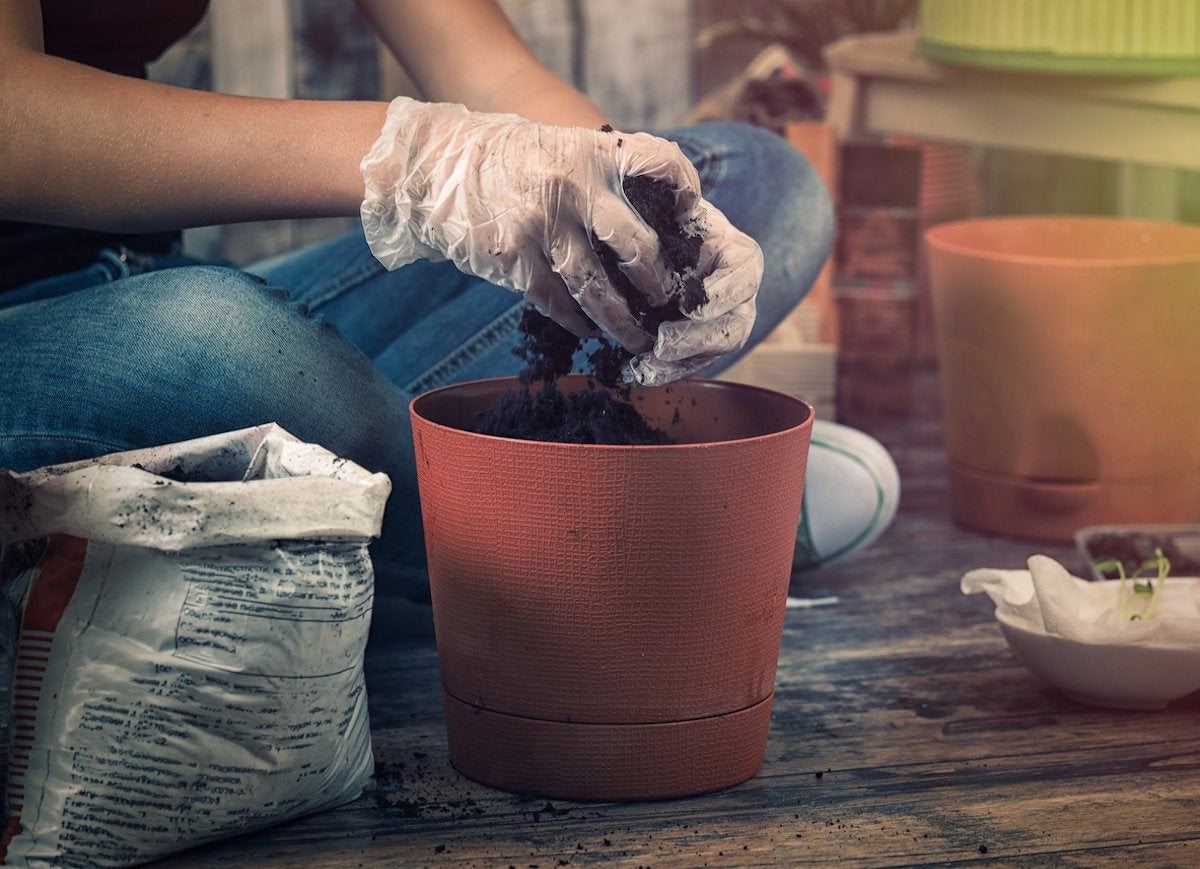
Ground that’s been hardened by frost is not easy to plant in. If you’ve got the planting itch, though, you can always put together a beautiful container to place on your porch or patio, or in the yard. Plants like wintergreen, carex, Skimmia ‘Rubella,’ ajuga, and hardy sedums are all good choices for winter containers.
Related: The 20 Best Winter Plants for Year-Round Curb Appeal
Use Berry Bushes for Color
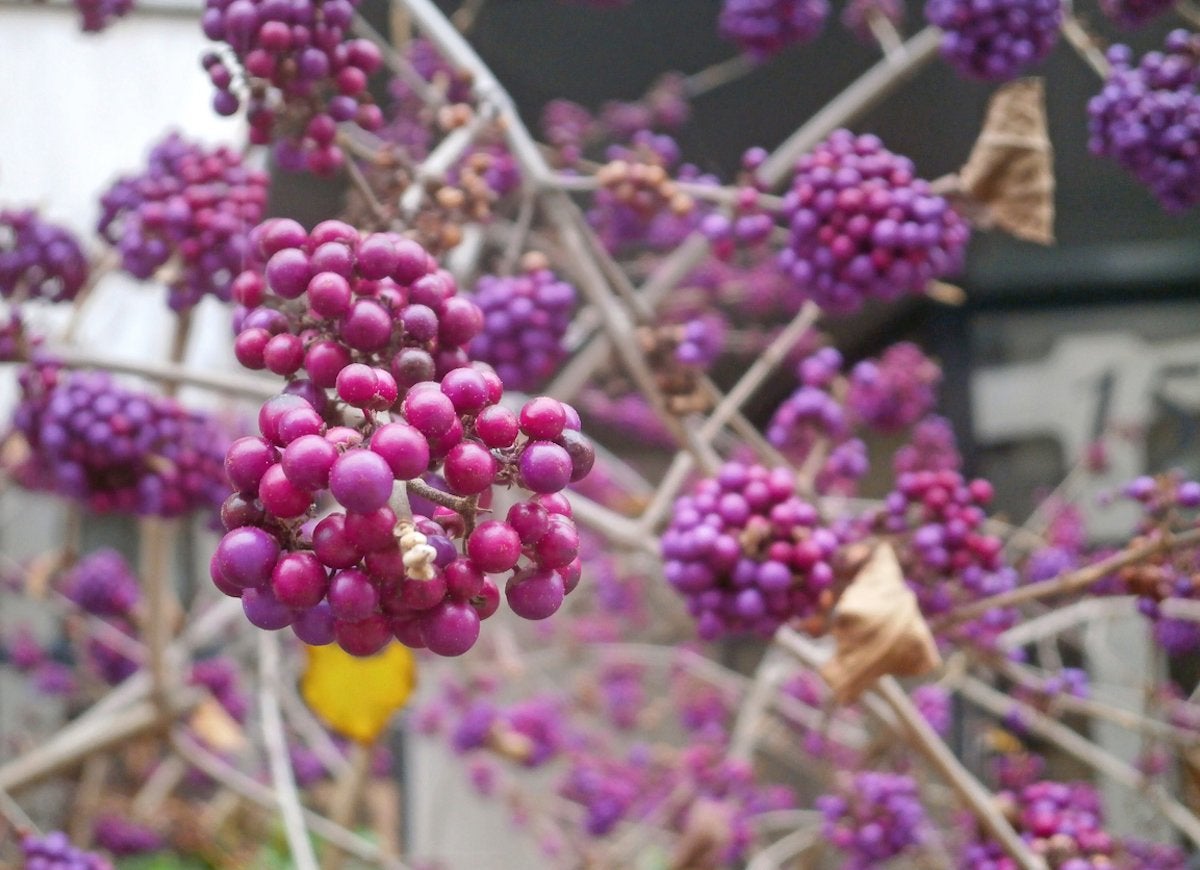
Keep all four seasons in mind when choosing plants and shrubs for your landscaping. Shrubs like winterberry, Nandina domestica, firethorn, and American beautyberry not only bring a profusion of colorful berries to your garden in winter, they also provide food for birds and other animals, which are beautiful to look out at as well.
Related: The 20 Best Winter Plants for Year-Round Curb Appeal
Learn to Love Seed Heads
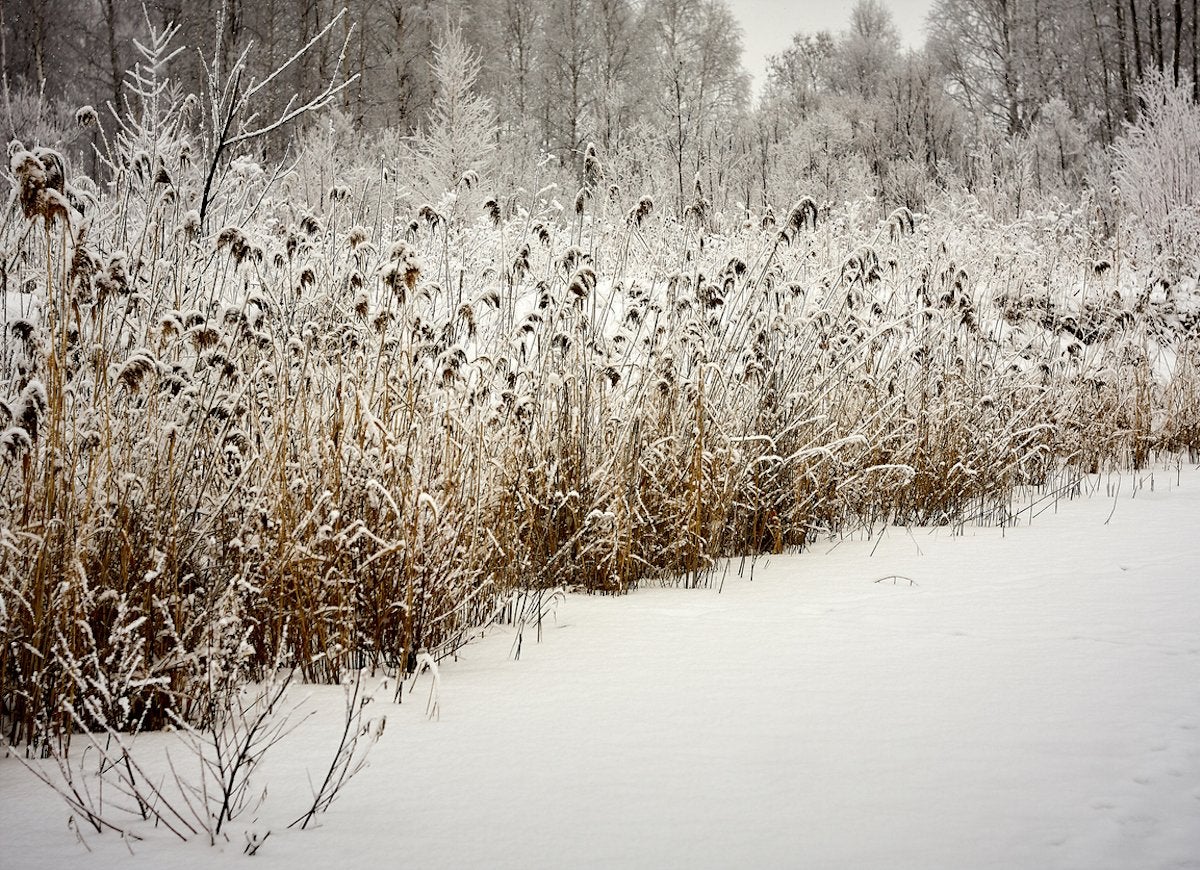
Many ornamental grasses and other plants have interesting seed heads that will—if you avoid cutting them back—add dimension to a winter landscape. They will also provide food for birds and other wildlife, which will create another layer of interest in your yard.
Decorate
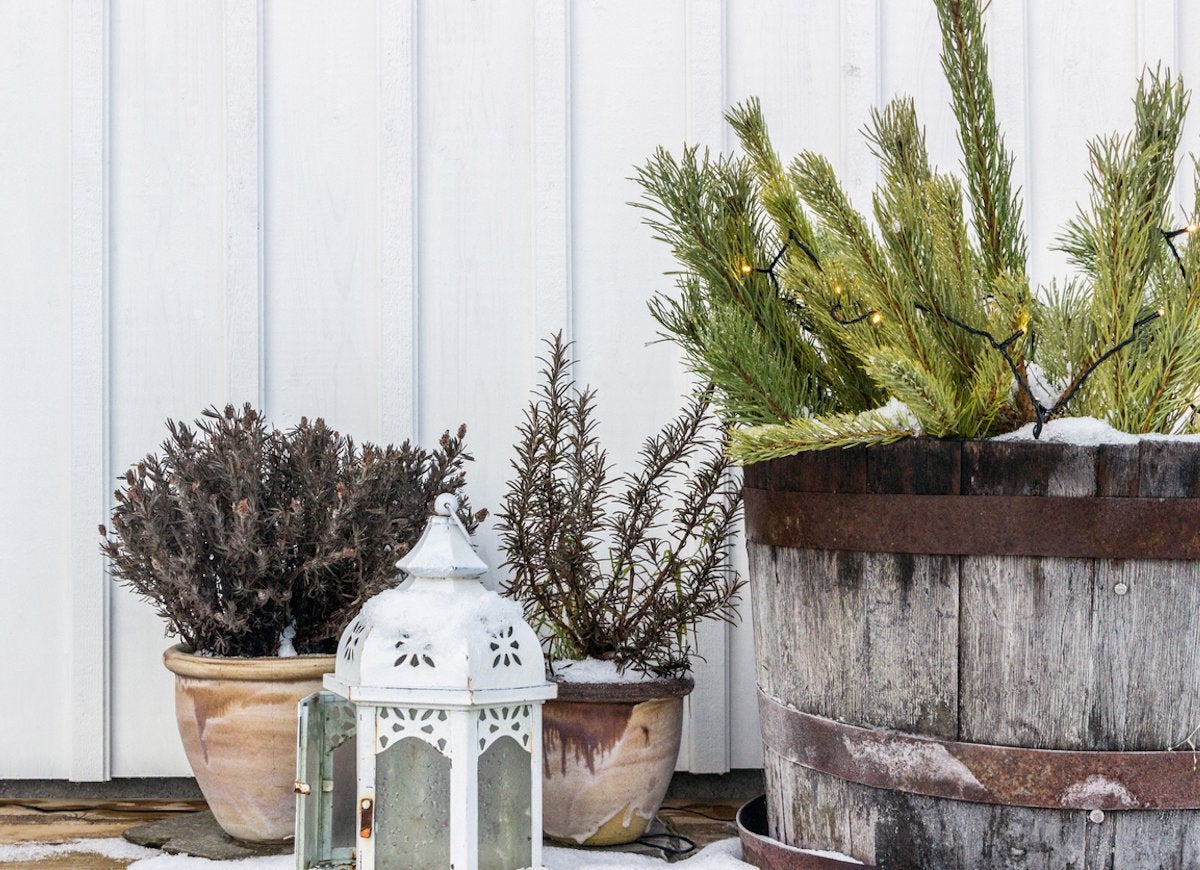
Add wreaths, lawn ornaments, and new planters to your landscaping in the winter to bring some sparkle to those cold winter days and dark winter nights.
Choose Plants with Colorful Structure or Winter Blooms
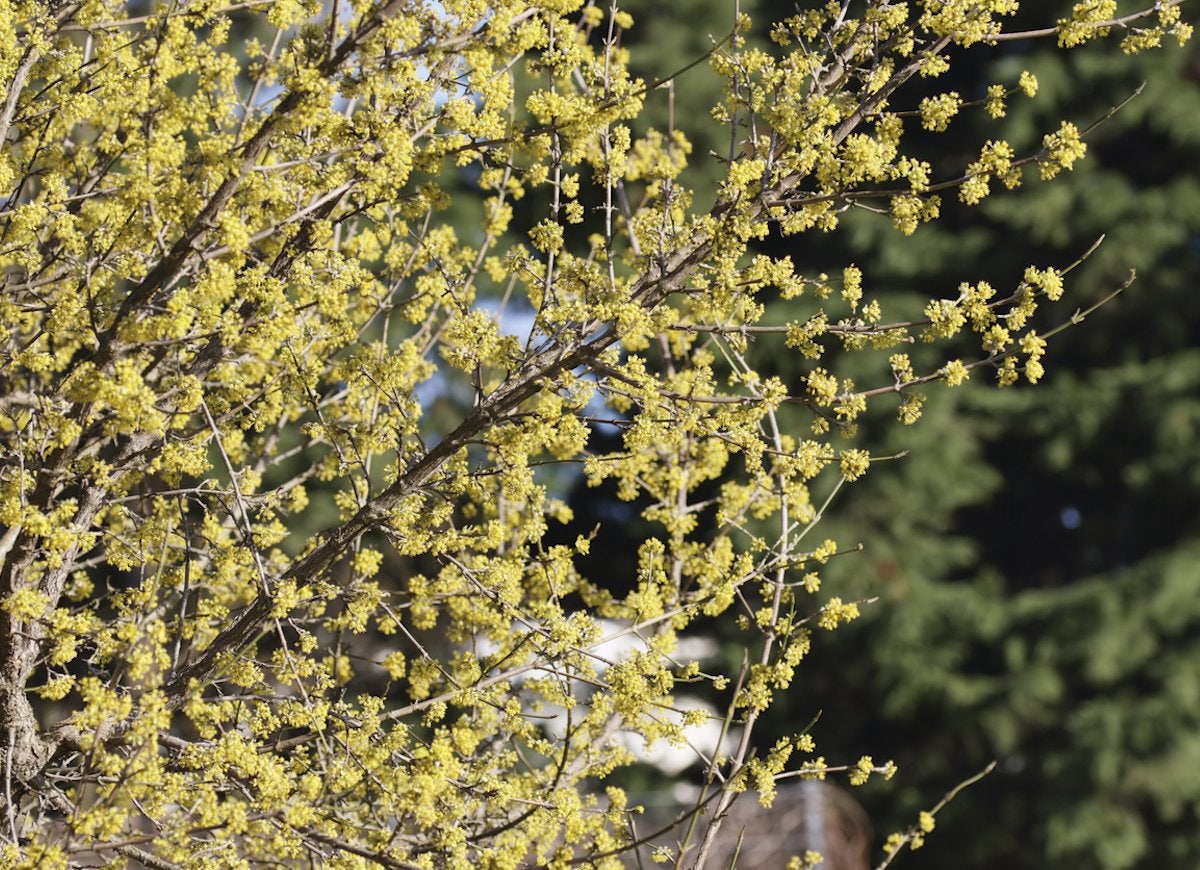
Many shrubs and trees have colorful branches, textured bark, or winter flowers, all of which provide great interest in the garden in the “off season.” Red twig dogwood, with its bright red branches, or witch hazel, with its burst of bright yellow blossoms in December, are two good choices.
Related: 9 of the Best Shrubs for Any Garden
Plant Bare Root Plants
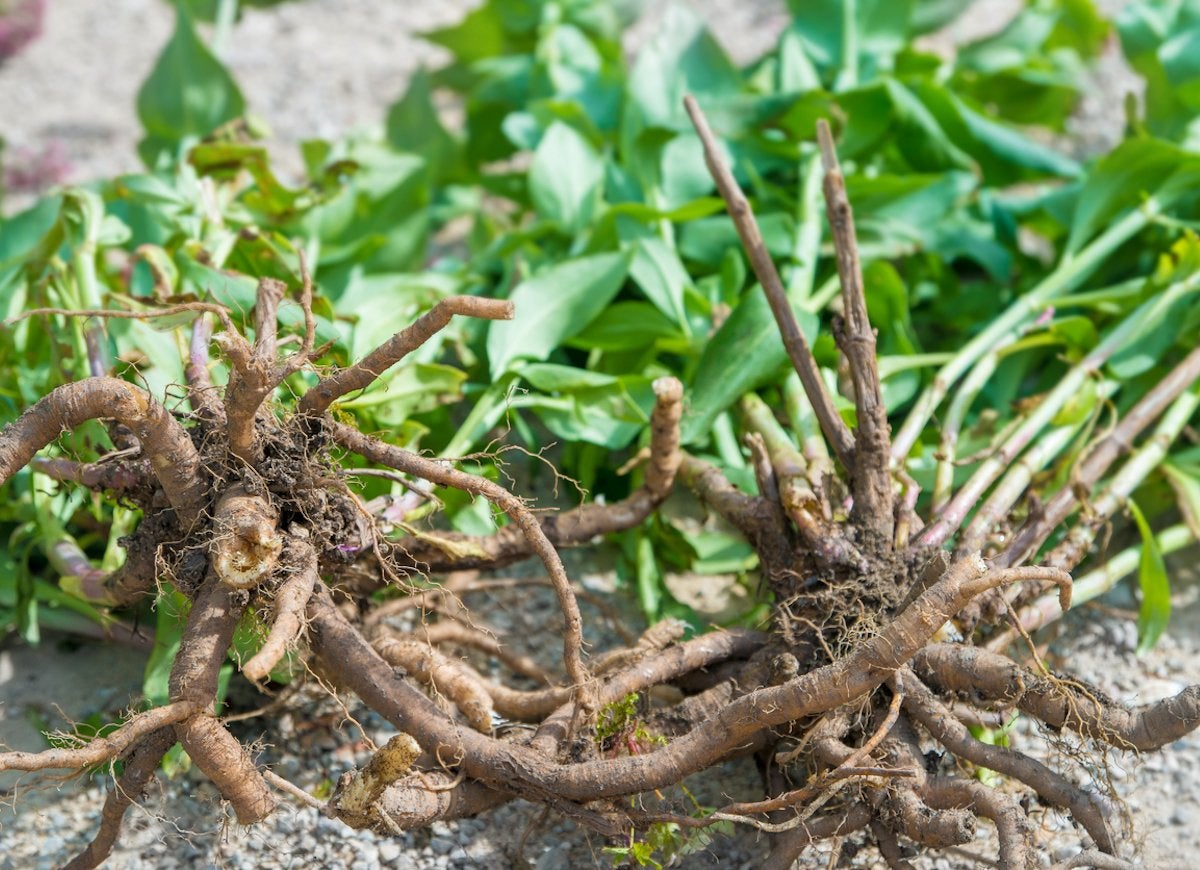
Winter is an excellent time to plant bare root trees and shrubs. These plants have the advantage of being dormant while being transported and dug in, and will have their roots established in the ground before waking up in springtime. They’ll have a jump start on dispersing their roots into the warming soil.
Light Up the Night
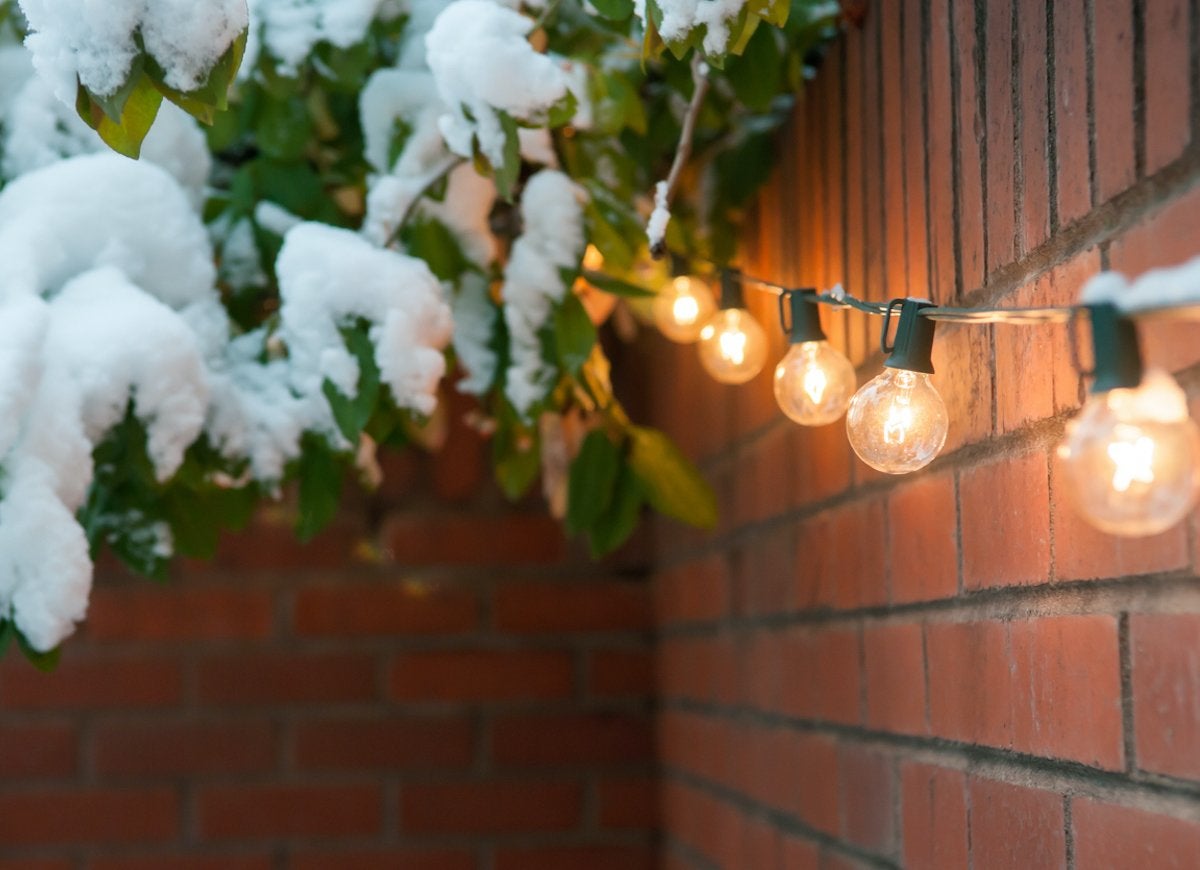
Cheer up those long, dark, winter nights with some decorative lighting. Whether you use string lights, lanterns, or low voltage lights, they’ll cast a warm glow on the cold landscape.
Get an Outdoor Heater
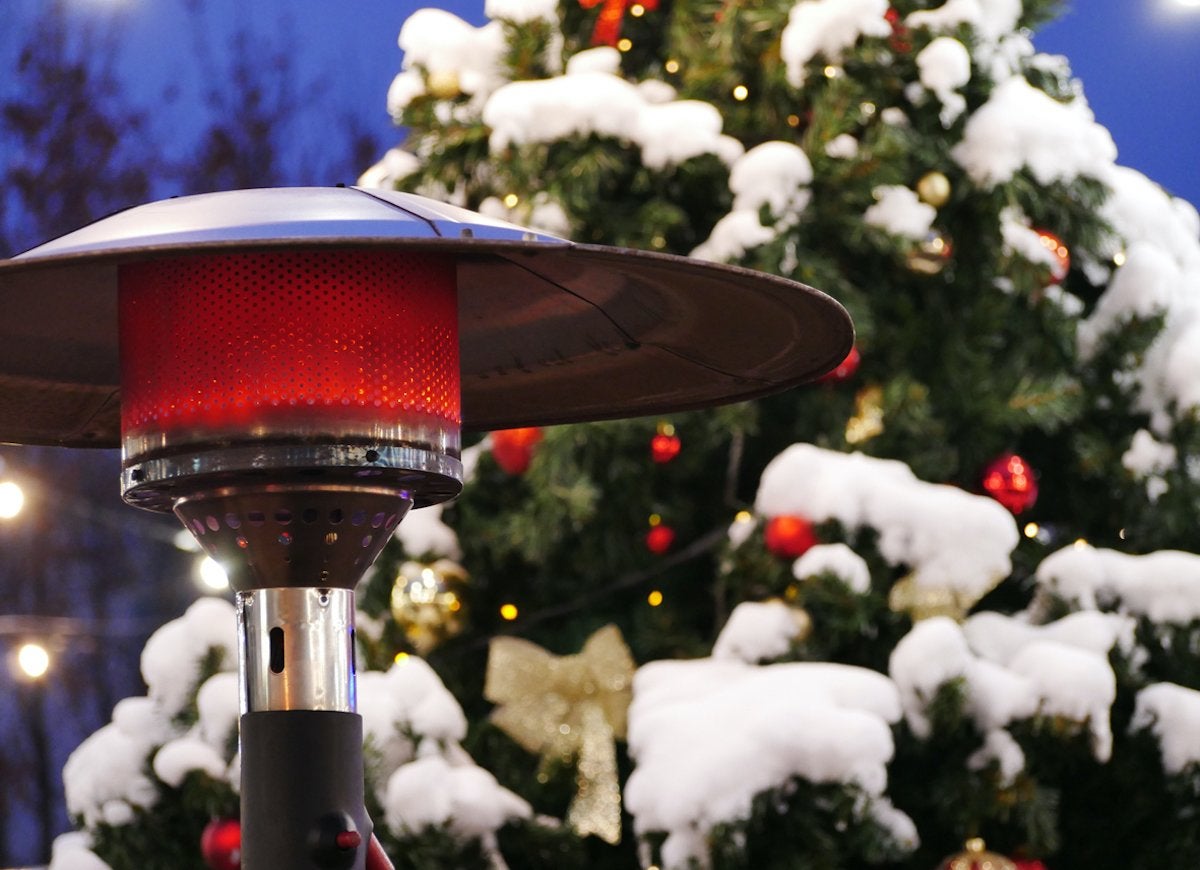
You can still entertain outdoors in wintertime if you get an outdoor heater. Substantial patio heaters, run on propane or butane, can be purchased for a couple hundred dollars. It will provide radiant heat to keep you cozy on chilly nights under the stars.
Related: Our Favorite Patio Heater is Easy to Transport and Provides Plenty of Warmth on Cool Nights
Do Some Winter Composting
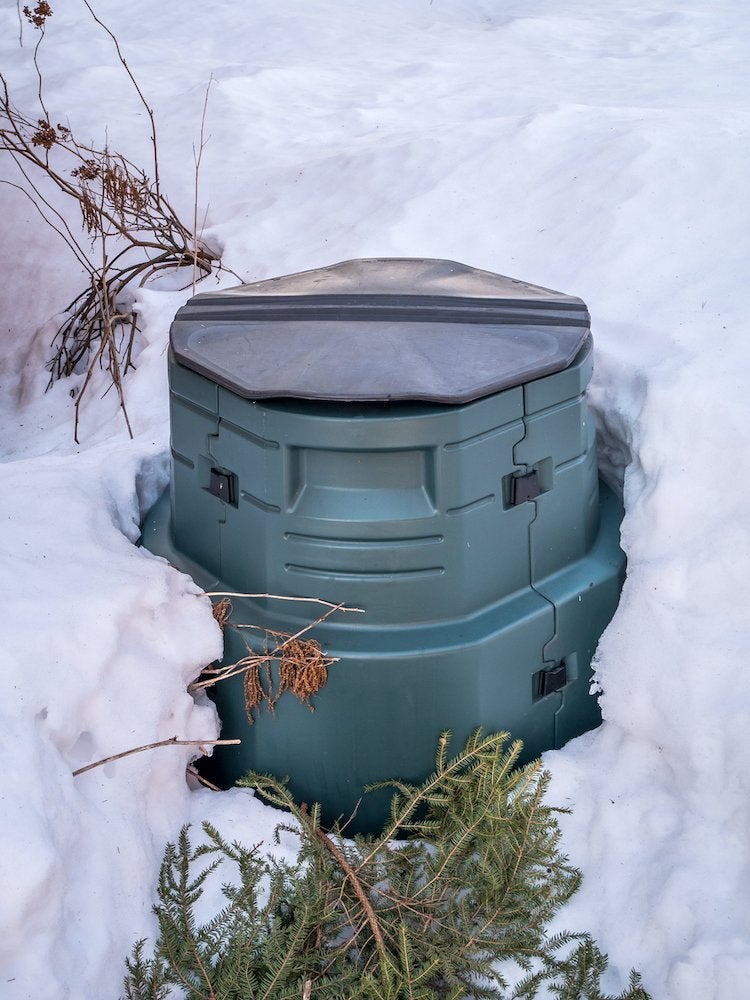
While composting requires heat to facilitate the rotting process, a well-constructed compost pile can generate its own heat, even in wintertime. Add some insulation like flattened cardboard to the top, and cover it with a tarp to keep it from getting overly wet. Turning it more frequently to let air into it will also help a winter compost heap to break down more quickly. Stay diligent, and by springtime, you’ll be harvesting black gold.
Get a Heated Bird Bath
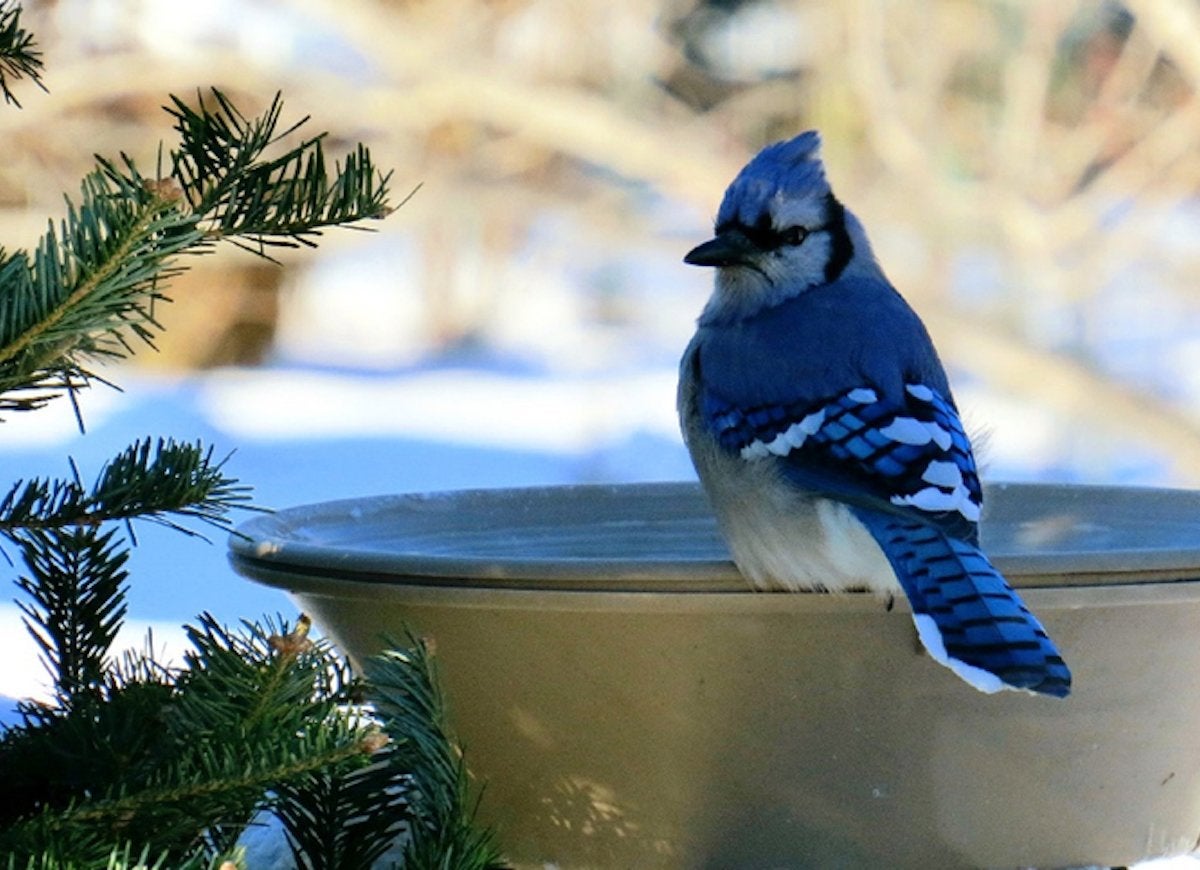
Watching backyard wildlife is a wonderful winter pastime. Go a step further than providing a bird feeder by providing water for our feathered friends to drink and bathe. Then settle back with a warm cup of cocoa, and enjoy the show.
Install a Weather Station
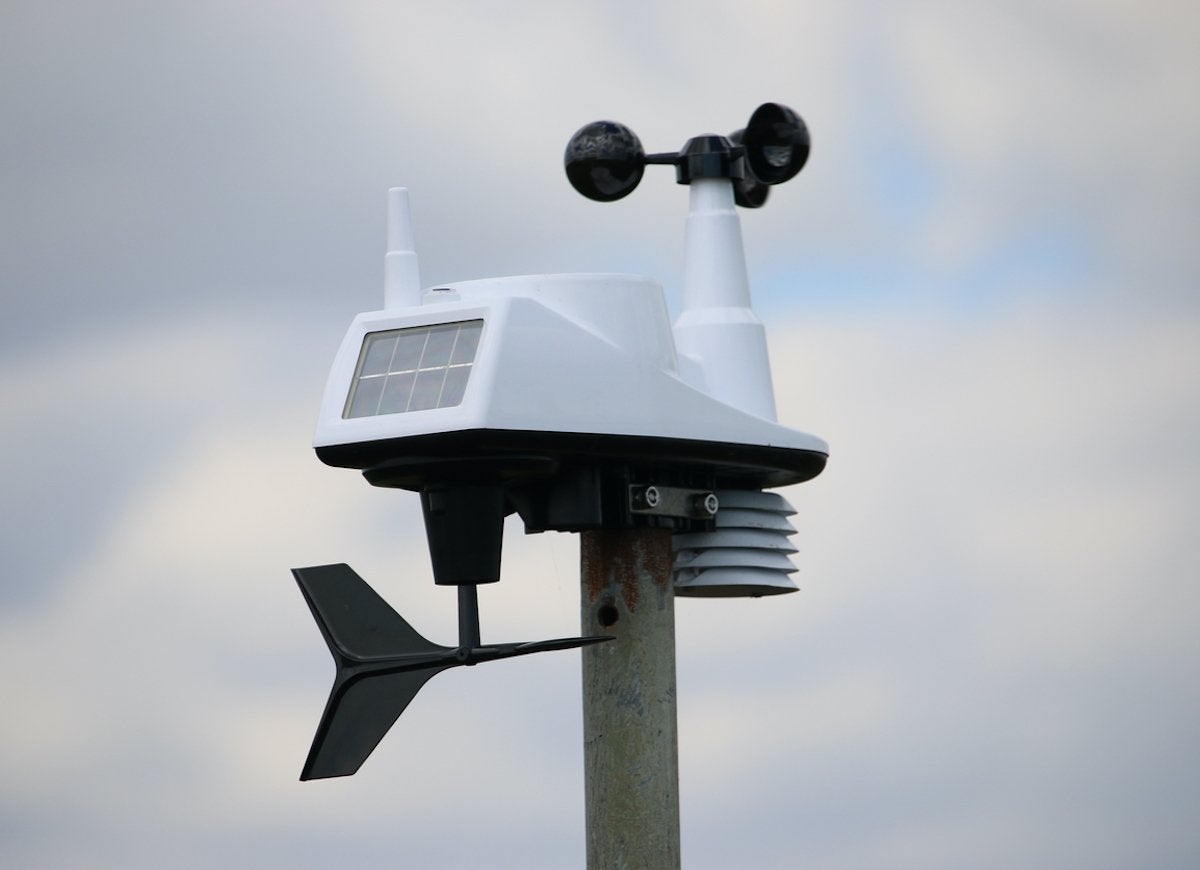
Installing a backyard weather station will not only help you to care for your garden during the winter, but it will also enable you to track patterns in weather conditions that will inform your landscaping plan all year round. Once you install one, you’ll wonder how you ever lived without it.
Read Some Gardening Books

While the weather is cold and crummy, it’s the perfect time to curl up inside and do some research. Work on your gardening reading list during the winter months, to get inspired for the new planting and growing season ahead.
Force Some Bulbs
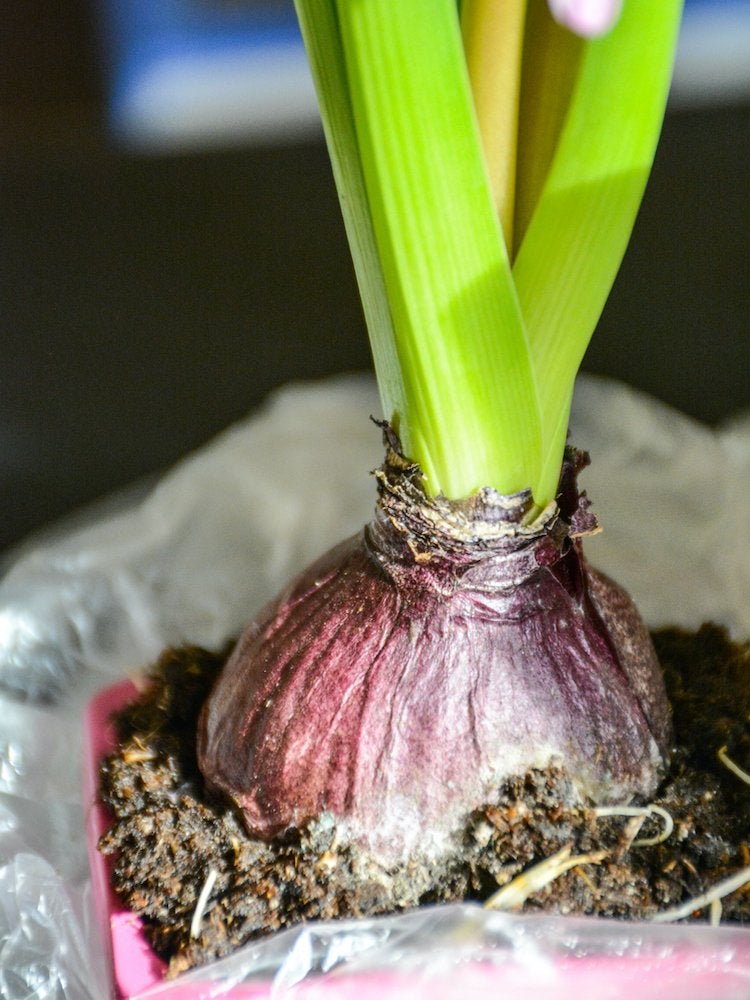
You can get a jump on the season by forcing some garden bulbs indoors during winter. Whether you grow them in water, potting soil, or gravel, a cheerful burst of spring color in the middle of February will be a welcome sight. Keep those forced bulbs growing until the weather warms and you can plant them outdoors. They will usually recover, and eventually bloom again.
Maintain Your Pathways
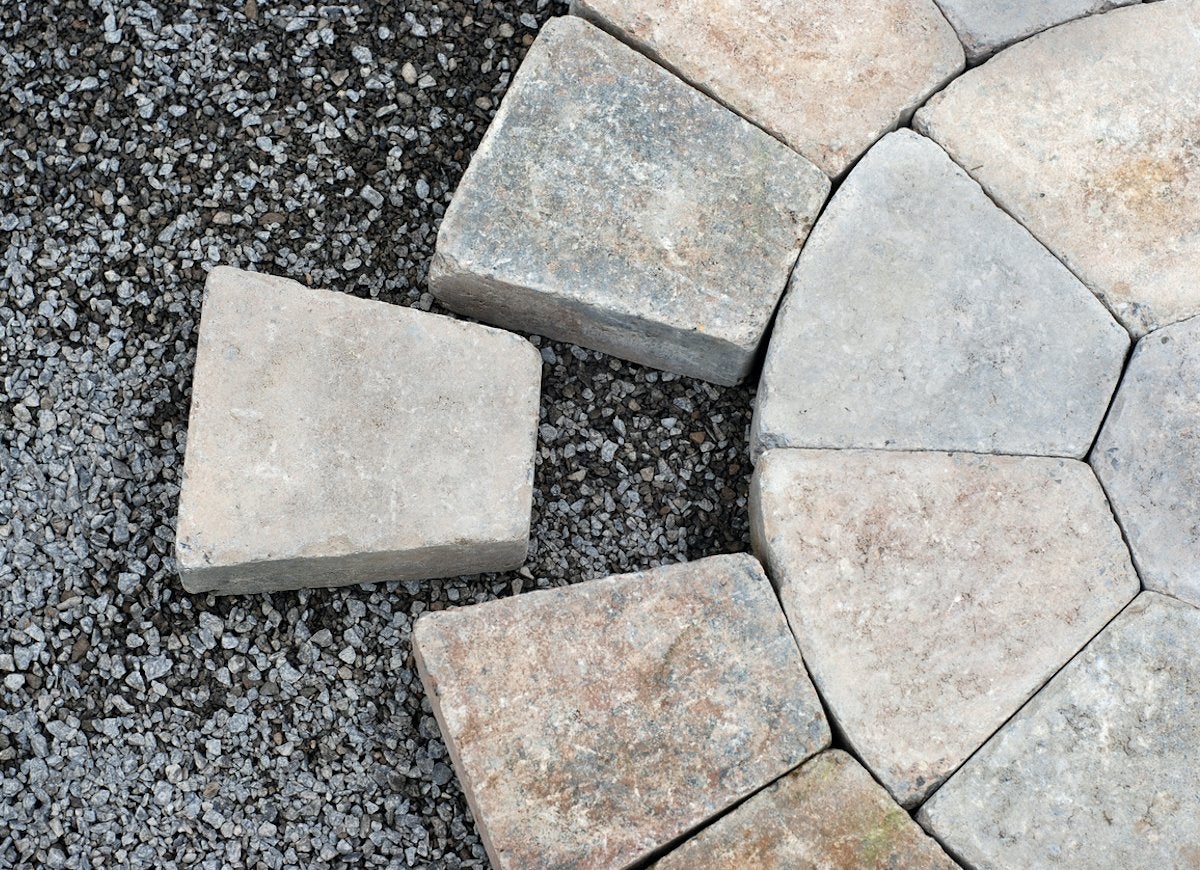
There’s always maintenance to do in landscaping, even in the middle of winter. The off season is the perfect time to maintain pathways, or cut in new ones. Replacing broken bricks or fixing edging is a harder task to get to—both physically and from a time management standpoint—when everything is growing.
Feed the Fire Pit
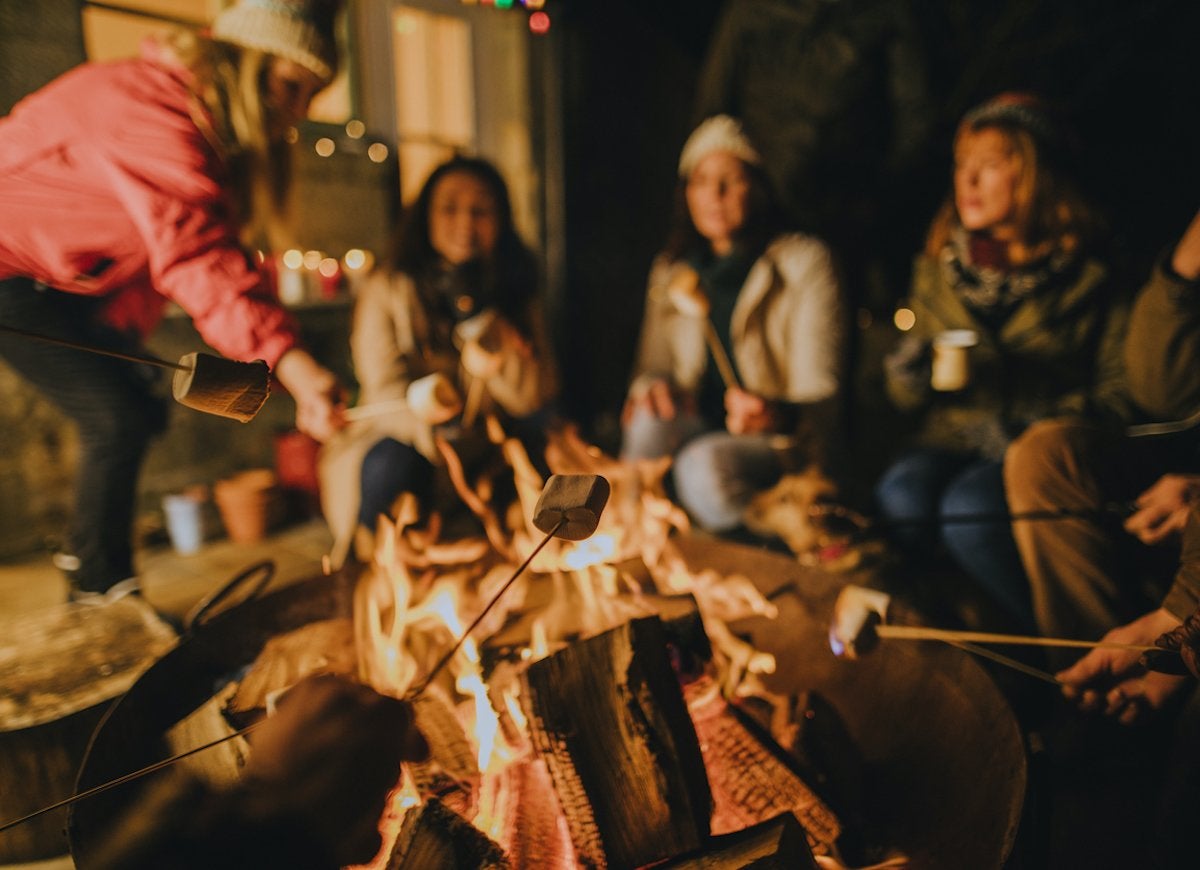
Hot cocoa and s’mores taste even better on a crisp evening under the stars. If you have a fire pit, keep it ready to go in the winter months, and get the most out of your outdoor space off-season. If you don’t already have a fire pit, consider purchasing one to use during your holiday entertaining.
Related: After 33 Hours of Testing, Here Are Our 11 Best Fire Pits of 2025
Do Some Birdwatching
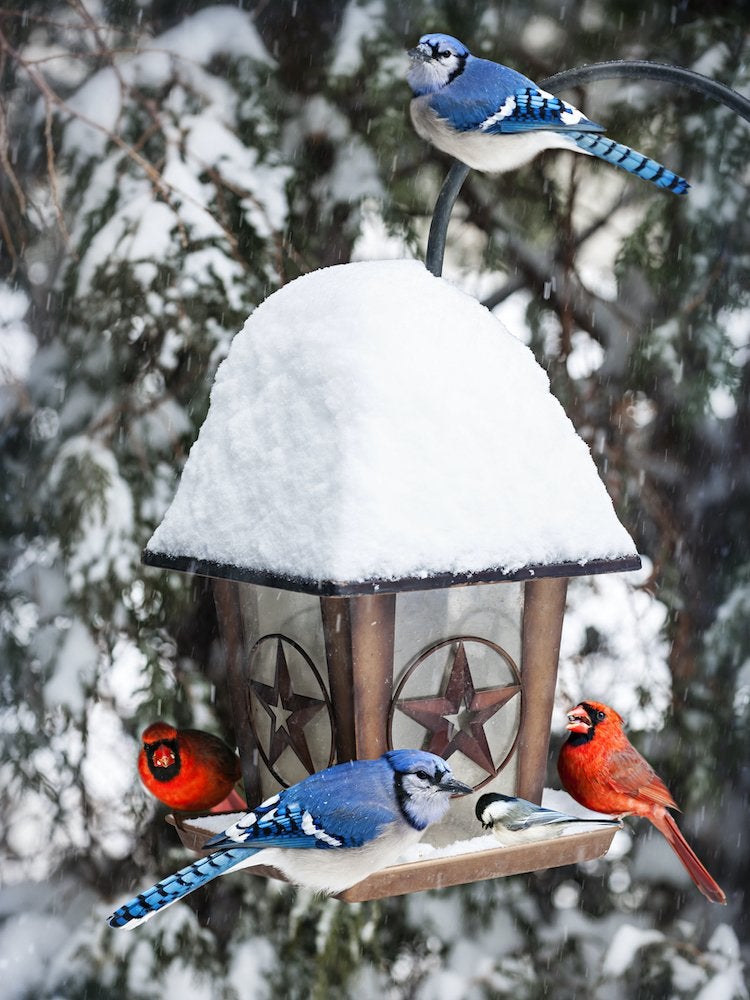
The backyard can be a great training ground for a beginning birder. If you’ve got a feeder and a source of fresh water, you can start by just observing daily. Be sure to look at ground level too for those birds foraging for fallen seeds. Get a birding book to learn how to identify them, and start learning about their characteristics and behaviors. Backyard birding is a hobby that is truly open to all, regardless of age, mobility, or how large your yard is.
Relocate Trees and Shrubs
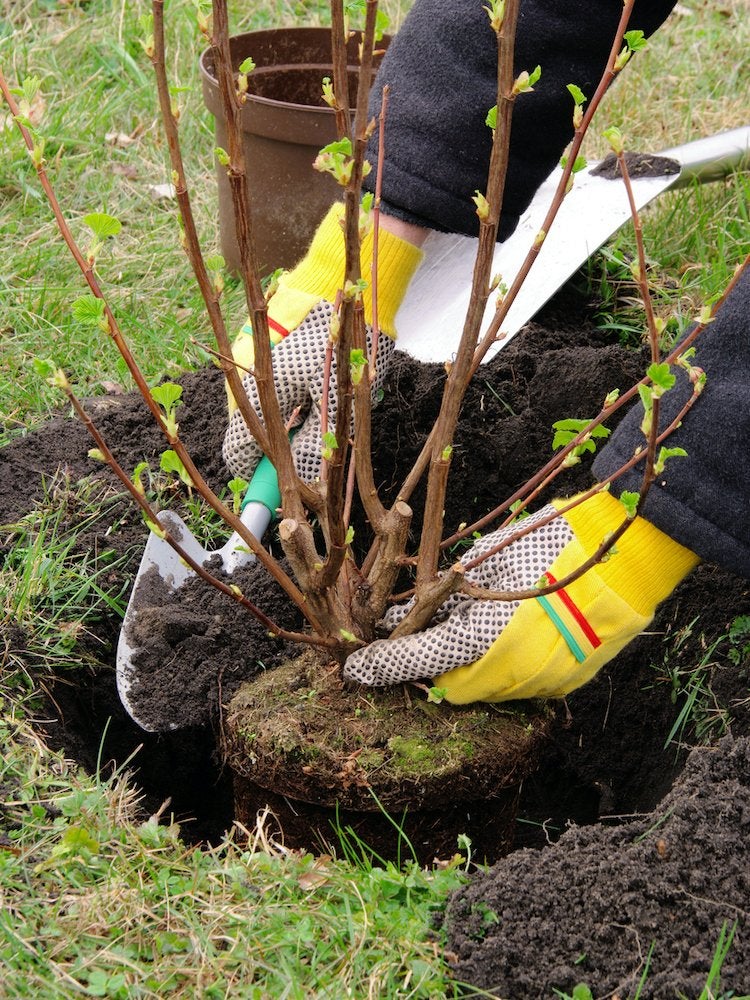
It’s best to transplant large shrubs and small trees while they’re dormant during the winter months. Don’t be afraid to start digging after the last leaf falls, before the ground freezes. These plants will have plenty of time to settle in and get established in their new soil before the spring thaw comes.
Related: 10 Landscaping Must-Dos to Help Your Plants Survive the Winter
Weed Out Invasive Species
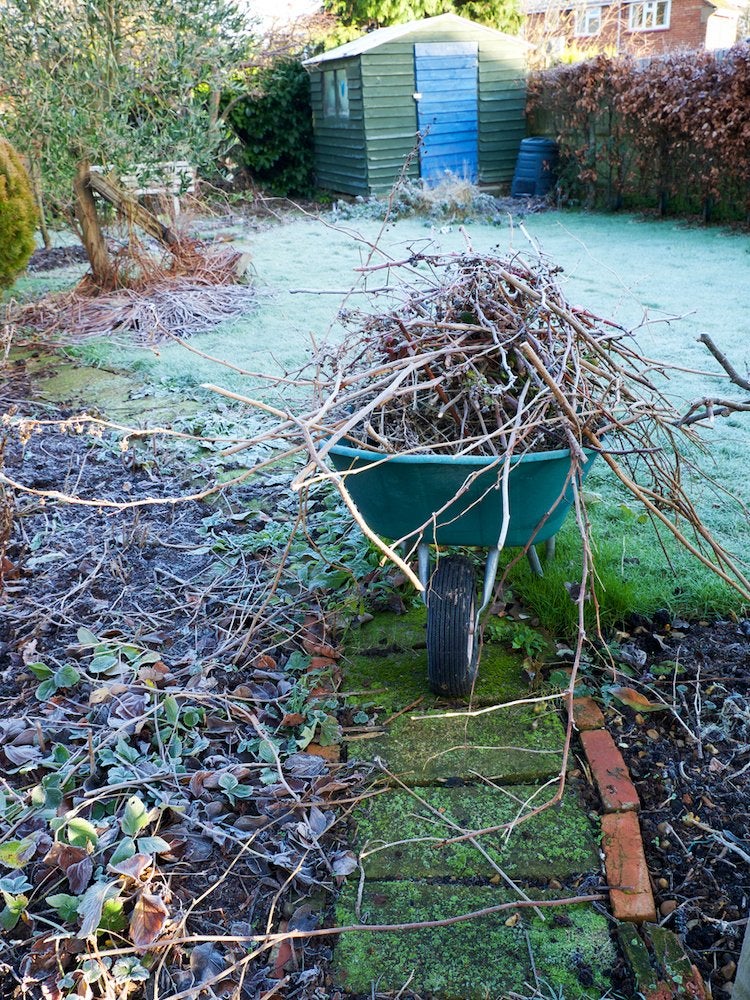
Once the summer rush of blossoms have faded and leaves have fallen, it’s easier to see the structure of your landscaping. Unwanted and invasive species will be more exposed, and easier to remove and eradicate. Taking time in the winter to do this chore will pay off once the new growing season begins.
Get Gardening
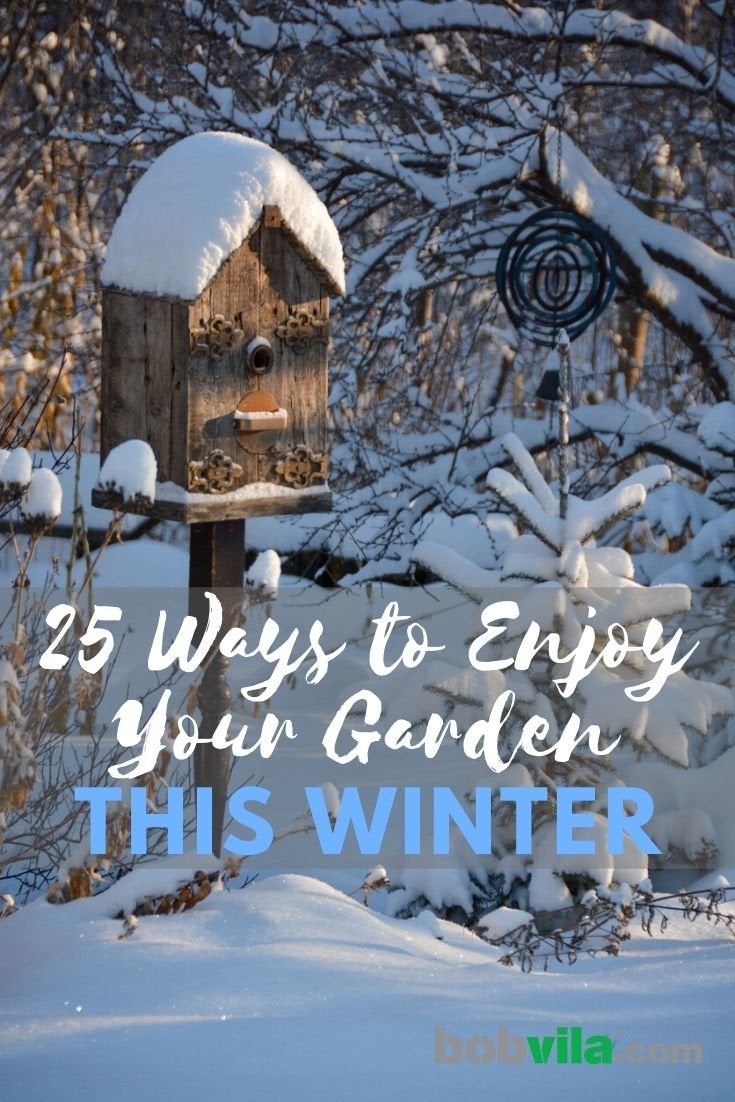
There are lots of ways to enjoy your garden, even in the cold, winter weather.

Our Best Advice for Beginner Gardeners
We’ll help you set up your first garden—whether that’s a few pots on your patio, a raised bed, or an in-ground plot out back—and select the right plants for your soil and region.
